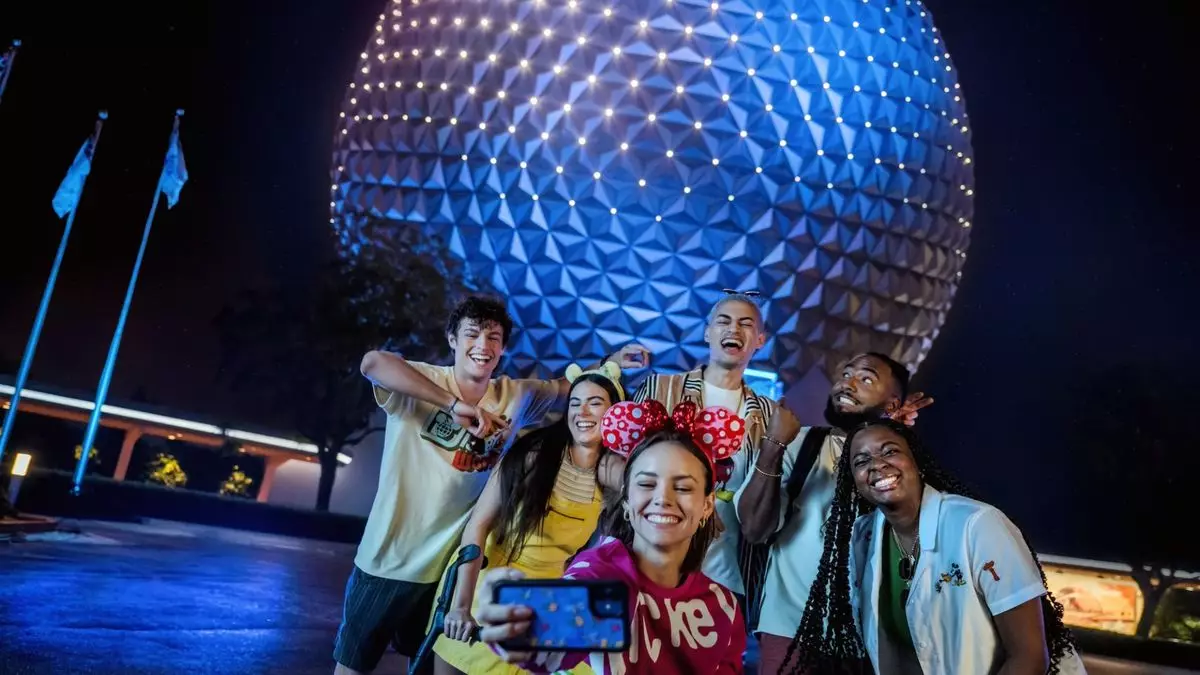Disney’s theme parks have long been synonymous with family fun and magical experiences. However, the introduction of the Lightning Lane Premier Pass has added a new layer to the visitor experience, particularly for those with a willingness to invest more for quicker access to attractions. This pass was launched in October of last year, initially targeted at guests staying at select Disney hotels. Over time, it has expanded to anyone eager to enhance their park visit experience. Despite its broadening availability, the selling strategy remains conservative, indicating Disney’s cautious handling of this premium product.
The Lightning Lane Premier Pass offers holders the opportunity to skip the regular lines at most attractions, allowing them to enjoy the thrills of the park with heightened convenience. Yet, potential buyers must navigate a time-sensitive game, as Disney prioritizes hotel guests who have the chance to purchase the pass seven days before their planned stay. For the wider public, access is limited to three days before their visit, creating a competitive environment where non-hotel guests risk missing out due to supply constraints.
Disney’s Chief Financial Officer, Hugh Johnston, discussed the adoption strategy for the Premier Pass during a recent earnings call, highlighting the company’s intentional slow rollout. Johnston explained, “Remember, it is a premium product. It is a product that we are learning how to use.” This statement underscores a careful balancing act: the need to sell a coveted product while ensuring that the experience remains enjoyable for all guests. The targeted marketing approach helps mitigate overwhelming demand that could compromise the park experience for general visitors, making it a calculated but necessary decision in a competitive leisure market.
Pricing for the Lightning Lane varies based on factors such as timing and the specific park visited. This variability suggests that Disney is attempting to tailor offerings to both peak and off-peak visitors, enhancing revenue potential but simultaneously creating a challenge for customers trying to budget their trips. On any given day at Walt Disney World, prices span from $119 to $399 per person, while at Disneyland, they range from $300 to $400. Such a price range exits in a context of other skip-the-line offerings, which only cover individual attractions, clarifying the value proposition for guests considering the Premier Pass.
Disney’s latest fiscal report reveals insights into the broader health of its theme park and experiences division, generating $9.42 billion in revenue, a modest 3% increase. While operating income held steady at $3.11 billion, it is crucial to note the external factors impacting these figures—hurricanes Milton and Helene were significant contributors to an estimated $120 million loss. Furthermore, additional operational expenses related to the Disney Treasure, which launched in late December, also contributed to a complex financial landscape.
Interestingly, while domestic operating income faced a 5% decline, international performance surged by 28%, suggesting a robust global appeal. Such trends might influence future pricing structures and operational strategies—clearly, there is a need for Disney to adapt according to varying international market demands.
2025 marks several notable anniversaries within the Disney portfolio—the 70th anniversary of Disneyland and the 20th anniversary of Hong Kong Disneyland, alongside the upcoming debut of two cruise ships. These milestones present an opportunity for Disney to engage both nostalgic visitors and new audiences. With the anticipation surrounding the Disney Treasure’s initial voyages, characterized as “off to a spectacular start,” the cruise segment seems poised for growth.
As Disney navigates the complexities of the theme park landscape, its cautious yet strategic approach towards the Lightning Lane Premier Pass exemplifies its commitment to both profitability and a balanced guest experience. Future expansions and celebrations will undoubtedly reflect the intricate dynamics of consumer behavior amidst evolving expectations.

